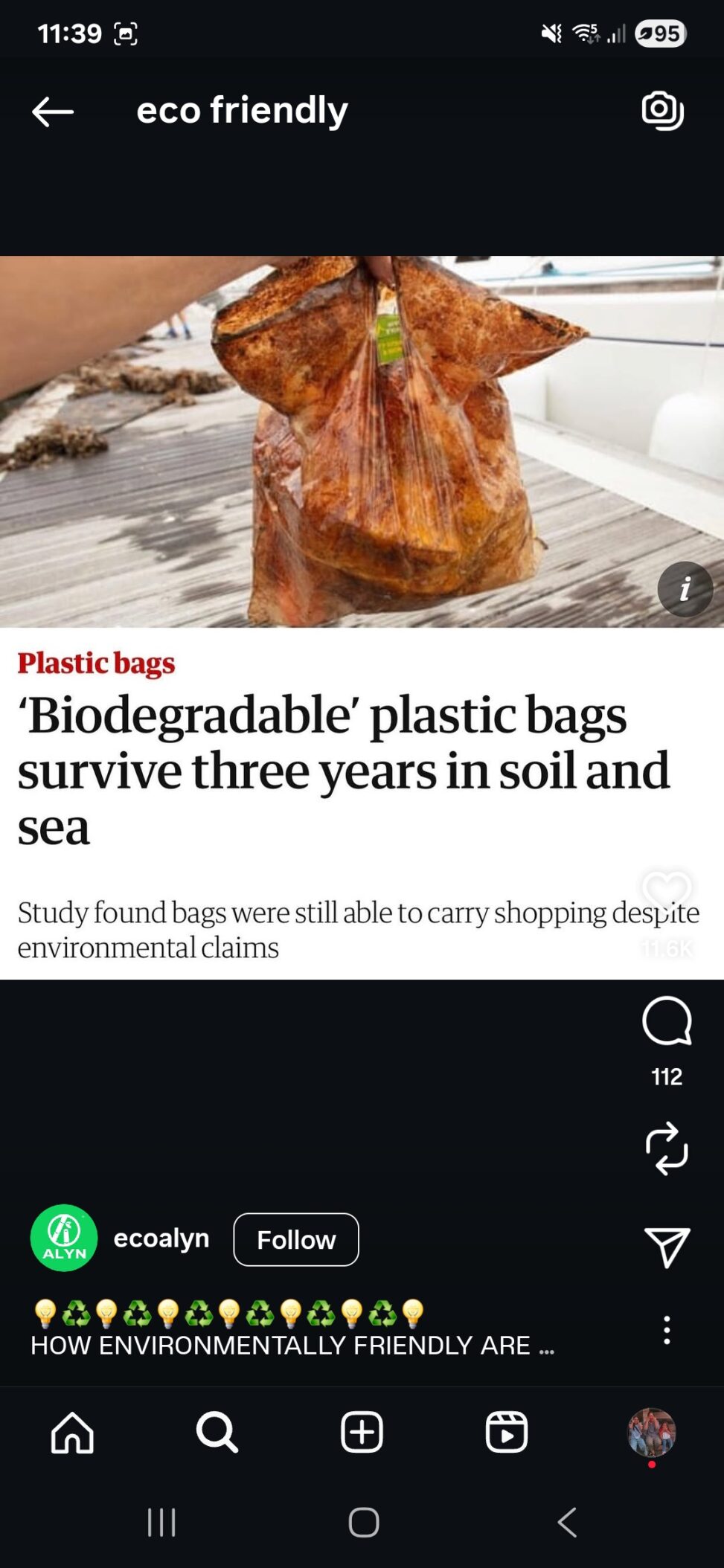I encountered an Instagram advertisement promoting 100% biodegradable plastic bags.The ad can be analyzed through the lens of semiotics. The color green, universally associated with nature, dominates the image. The use of leaves and a globe icon reinforces the idea of environmental protection. The study suggest that purchasing biodegradable bags equals being a responsible global citizen.
From the perspective of advertising appeals, the ad relies on ethical appeal (ethos) and emotional appeal (pathos). It persuades by framing consumption as moral action purchasing these bags signals that you care for the earth and your family. Yet, this overlaps with greenwashing, which Delmas and Burbano (2011) define as the practice of misleading consumers about environmental practices or benefits. The ad offers no concrete evidence about how, where, or under what conditions the bags biodegrade. Instead, it relies on imagery and buzzwords to inspire trust.
Additionally, theories of consumer identity are relevant. As Holt (2002) argues, brands sell not only products but also identities. Here, buying biodegradable bags allows consumers to adopt the identity of a responsible, eco-conscious citizen without fundamentally altering consumption habits (e.g., reducing plastic altogether). This reflects the commodification of sustainability. It appeals to environmentally concerned consumers, particularly families, and encourages them to buy with the promise of having a beneficial influence. However, following closer analysis, the advertisement displays greenwashing traits, such as overstating environmental advantages without providing evidence.This instance demonstrates the persuasive power of image-based advertising, as well as the significance of critical media literacy when evaluating sustainability marketing.


Provide Feedback